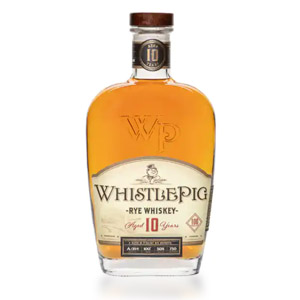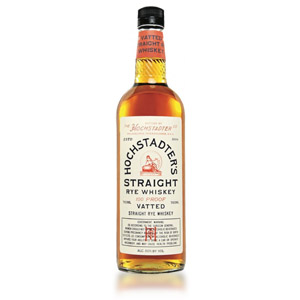Let’s start out by noting that I’m extremely late to the party on WhistlePig. The brand is one of those cult favorites that appeared out of nowhere and now fetches insane premiums where it’s not allocated. The annual Boss Hog release sells for between $500 and $1000 US!
Regular old WhistlePig releases, like this 10 year-old Straight Rye, are still expensive: Around $65 for a 750ml bottle. The rye in question is distilled in Canada at Alberta Distillers Limited (ADL, makers of Alberta Premium, Dark Horse, and other brands) and then shipped via tanker across the border to be “hand bottled” in Vermont. Some of the whiskey used by WhistlePig is aged in Canada, some is aged in Vermont, and they have also used American rye whiskey from MGP in Indiana. What a labelling nightmare that must be. Note that the company built a distillery at their farm in Shoreham, Vermont in 2015, so they have started transitioning to their own liquid starting with their FarmStock line.
Founded by late industry legend Dave Pickerell, WhistlePig is slowly growing towards their ultimate goal: 100% estate whiskey. They’re not only growing rye, they are making barrels from oak trees on the property.
The 10 year Straight Rye is ADL 100% rye whiskey aged (presumably in Alberta) and then finished in Vermont in virgin American Oak barrels, for a total of 10 years. It’s unclear whether they’re using their local Vermont oak for this. The result is bottled in small batches at 50% ABV.
Nose: Rye spices appear first, with cinnamon, clove, and star anise. The spices are fresh and vibrant, not dusty or stale like they are in some ryes. There is a vegetal layer – like pine sap and crushed grass – which is surprising in whiskey with 10 years on it. The overall effect is dry although there’s a little oaky sweetness and a hint of grain in the form of cinnamon buns.
Palate: Thin body. Moderate burn – appropriate for 50% ABV – followed by sweet oaky goodness, cinnamon red-hot candies, cinnamon salt water taffy, toffee, and another dose of those mulling spices from the aroma. Coherent.
Finish: Medium length. Mouth-drying oak tannins, yet more cinnamon and clove but dry again. In fact, it’s downright peppery now. Fades without evolving, but also without bitterness.
With Water: A few drops of water sweeten the aroma but also mute it – necessitating a brief rest in the glass. The rest brings out a bit of vanilla frosting. The palate seems unchanged, although the finish is also sweeter. Water isn’t a bad idea here, but make sure to allow the glass to rest after adding it.
Overall: This whiskey screams “rye spices” more than basically any other rye I’ve had. The requisite cinnamon, clove, and anise are robust and persist throughout the experience. This is doubly interesting because although Canadian whisky is often referred to as “rye” and usually contains the grain, it rarely shows this intensity of spice notes. Never in a million years would I guess that this was from Canada. Even 100% rye Canadian whiskies like Lot 40 don’t show this much spice. That said, the rest of the notes are somewhat pallid and one-dimensional. There is little sweetness to balance the spice, and little complexity to support it. I can’t shake the feeling that purchasing a bottle of sourced WhistlePig, despite its cult following, is in a sense paying for a number and a name.
I’m marking this “Try Before Buy” because you should know what you’re getting into before going through the effort or expense of tracking down a bottle. Also, assume that upcoming WhistlePig releases that contain more of their own-distilled whiskey are likely to be different, and I hope to review one soon.
Note: I categorized this as “Canadian” even though it’s an American brand. I have no idea what I’ll do when I review a WhistlePig that’s a blend of Canadian and Vermont whiskies…








Your batch/sample of WP 10 was obviously better than mine. The one I reviewed on my blog was very muted on the spice front and was so grassy and “green” that I thought maybe some mouldy grain had made it into the mash. Add to that the over $100 price tag here in Canada and I’m on the “avoid” side of things.